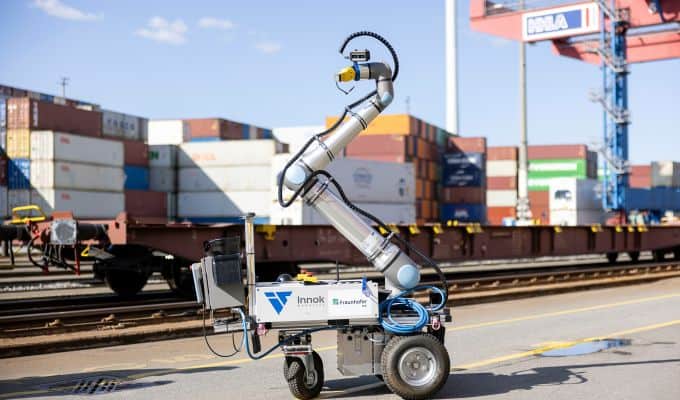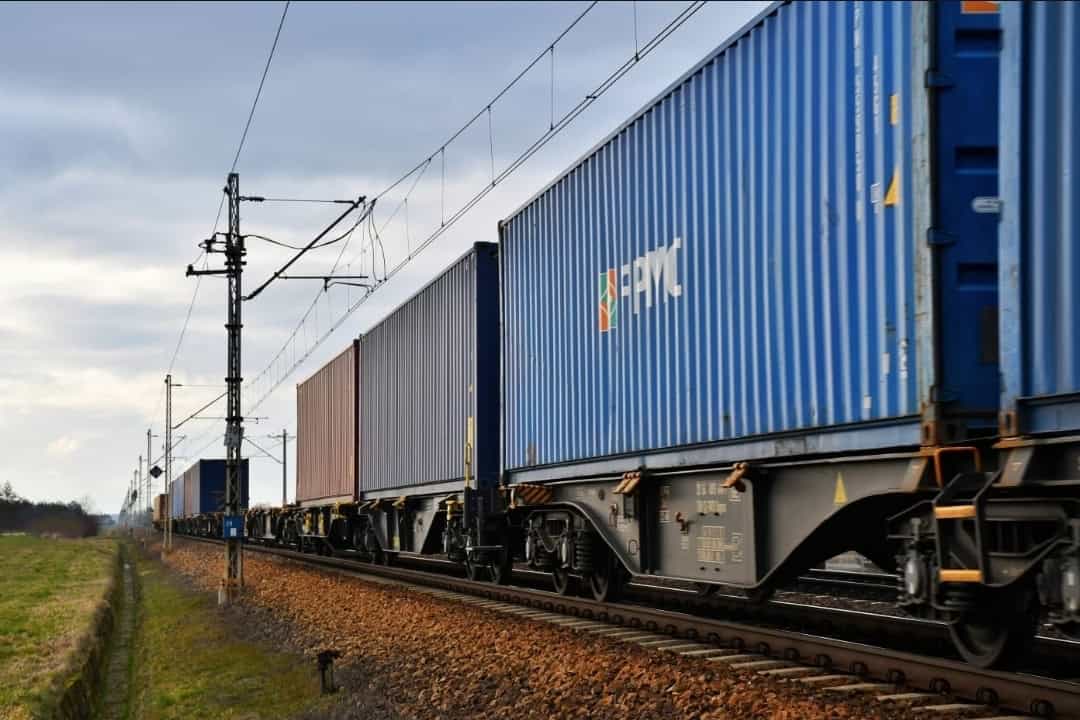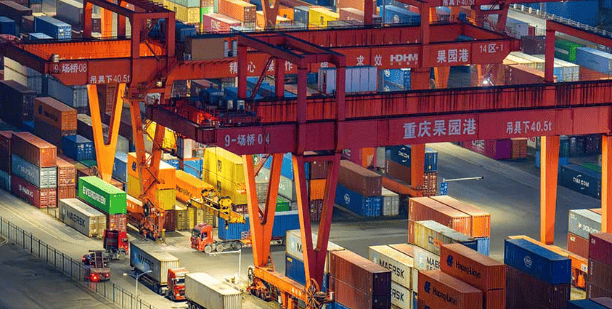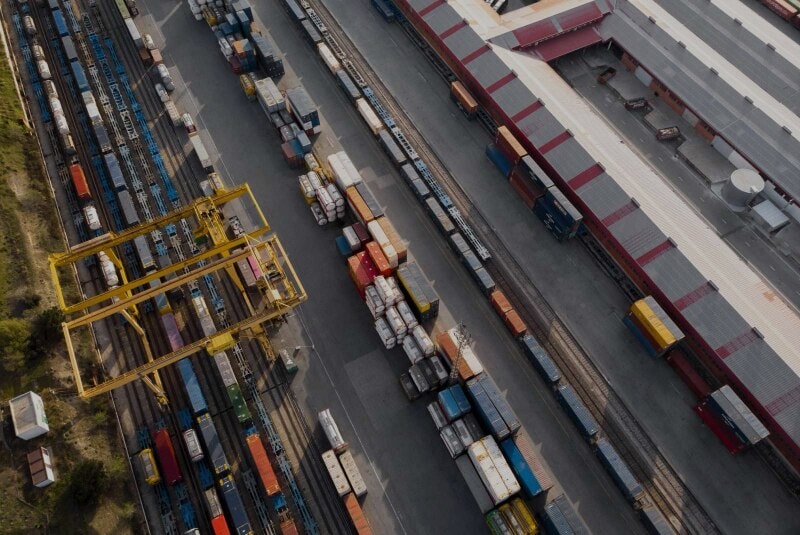Hamburger Hafen und Logistik AG (HHLA) and the Fraunhofer Center for Maritime Logistics and Services (CML) have successfully completed the “Pin Handling mR” project. The goal of the IHATEC project was to develop a mobile robot to automate the manual repositioning of pins on container wagons. This innovative railway handling solution was tested under real-world conditions at the HHLA Container Terminal Tollerort (CTT).
During the final project meeting on April 1, 2025, HHLA and Fraunhofer CML jointly presented the project results at CTT, demonstrating how a specially designed robot can handle the repositioning of pins on container wagons at the terminal—something that previously had to be done manually. The autonomous system, managed via the HHLA Sky control center, moves independently along the container train and precisely positions the necessary pins using its robotic arm.
Currently, these pins must still be manually adjusted before train loading. They are installed in various locations on container wagons and are opened or closed depending on container size. Even though the system is not yet ready for production, the research project has laid the foundation for further development. In a potential follow-up project, the technology could be further optimized and introduced to the market to enable cost-effective, operational use in practice.
Pablo Rossio, HHLA Project Manager, stated:
“This research project has demonstrated that automating pin handling in railway operations is technically feasible. The insights gained from this research now serve as a basis for further evaluating its operational use. Through the company-wide network established for the project—including our container terminals, HHLA Sky, and our railway subsidiary Metrans—we have combined our expertise to make terminal processes safer and more efficient. In the next phase, we aim to further develop this technology to enable its use in production operations.”
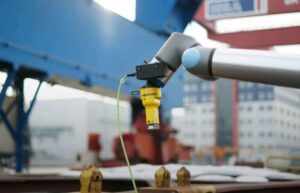
Johann Bergmann, Team Lead Port Technologies at CML, added:
“We are pleased with the successful completion of this joint project: the robot receives data from the control center, moves autonomously along the train, and relocates the identified pins using a magnetic gripper arm. Initially, the system components were simulated and then tested on a demonstrator in the laboratory. Particularly noteworthy is the seamless integration of standardized hardware with a software architecture based on the Robot Operating System (ROS), which was specifically designed to meet the unique requirements of this process.”
HHLA coordinated the project and supported it through its subsidiaries: HHLA Container Terminal Tollerort, HHLA Sky, Hamburg Port Consulting (HPC), and Metrans. The robot’s deployment was tested under real-world conditions at CTT. Fraunhofer CML was responsible for designing and developing the mobile robotics systems. This included selecting and procuring appropriate hardware components, integrating them into the overall solution, and testing the system.
The project was supported by Germany’s Federal Ministry for Digital and Transport (BMDV) as part of the Innovative Port Technologies (IHATEC) initiative. The aim of this initiative is to stimulate innovation in port technologies, particularly in the areas of autonomous systems and automated technologies.
